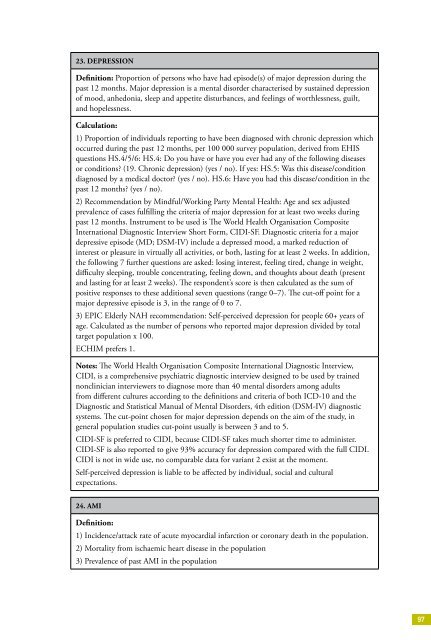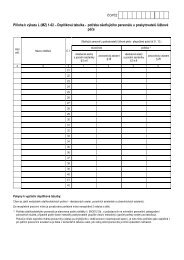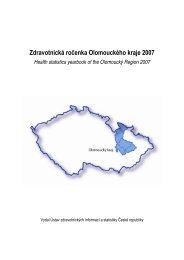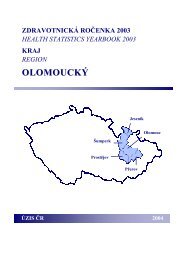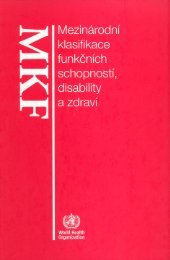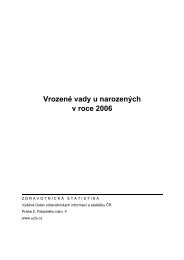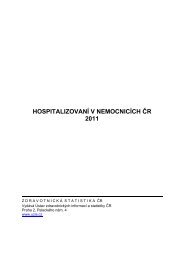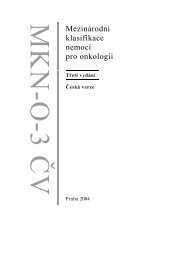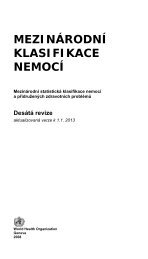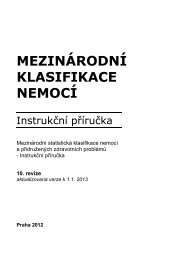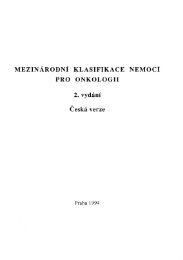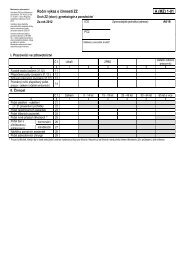ECHIM Final Report
ECHIM Final Report
ECHIM Final Report
Create successful ePaper yourself
Turn your PDF publications into a flip-book with our unique Google optimized e-Paper software.
23. DEPRESSION<br />
Definition: Proportion of persons who have had episode(s) of major depression during the<br />
past 12 months. Major depression is a mental disorder characterised by sustained depression<br />
of mood, anhedonia, sleep and appetite disturbances, and feelings of worthlessness, guilt,<br />
and hopelessness.<br />
Calculation:<br />
1) Proportion of individuals reporting to have been diagnosed with chronic depression which<br />
occurred during the past 12 months, per 100 000 survey population, derived from EHIS<br />
questions HS.4/5/6: HS.4: Do you have or have you ever had any of the following diseases<br />
or conditions (19. Chronic depression) (yes / no). If yes: HS.5: Was this disease/condition<br />
diagnosed by a medical doctor (yes / no). HS.6: Have you had this disease/condition in the<br />
past 12 months (yes / no).<br />
2) Recommendation by Mindful/Working Party Mental Health: Age and sex adjusted<br />
prevalence of cases fulfilling the criteria of major depression for at least two weeks during<br />
past 12 months. Instrument to be used is The World Health Organisation Composite<br />
International Diagnostic Interview Short Form, CIDI-SF. Diagnostic criteria for a major<br />
depressive episode (MD; DSM-IV) include a depressed mood, a marked reduction of<br />
interest or pleasure in virtually all activities, or both, lasting for at least 2 weeks. In addition,<br />
the following 7 further questions are asked: losing interest, feeling tired, change in weight,<br />
difficulty sleeping, trouble concentrating, feeling down, and thoughts about death (present<br />
and lasting for at least 2 weeks). The respondent’s score is then calculated as the sum of<br />
positive responses to these additional seven questions (range 0–7). The cut-off point for a<br />
major depressive episode is 3, in the range of 0 to 7.<br />
3) EPIC Elderly NAH recommendation: Self-perceived depression for people 60+ years of<br />
age. Calculated as the number of persons who reported major depression divided by total<br />
target population x 100.<br />
<strong>ECHIM</strong> prefers 1.<br />
Notes: The World Health Organisation Composite International Diagnostic Interview,<br />
CIDI, is a comprehensive psychiatric diagnostic interview designed to be used by trained<br />
nonclinician interviewers to diagnose more than 40 mental disorders among adults<br />
from different cultures according to the definitions and criteria of both ICD-10 and the<br />
Diagnostic and Statistical Manual of Mental Disorders, 4th edition (DSM-IV) diagnostic<br />
systems. The cut-point chosen for major depression depends on the aim of the study, in<br />
general population studies cut-point usually is between 3 and to 5.<br />
CIDI-SF is preferred to CIDI, because CIDI-SF takes much shorter time to administer.<br />
CIDI-SF is also reported to give 93% accuracy for depression compared with the full CIDI.<br />
CIDI is not in wide use, no comparable data for variant 2 exist at the moment.<br />
Self-perceived depression is liable to be affected by individual, social and cultural<br />
expectations.<br />
24. AMI<br />
Definition:<br />
1) Incidence/attack rate of acute myocardial infarction or coronary death in the population.<br />
2) Mortality from ischaemic heart disease in the population<br />
3) Prevalence of past AMI in the population<br />
97


